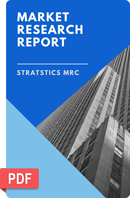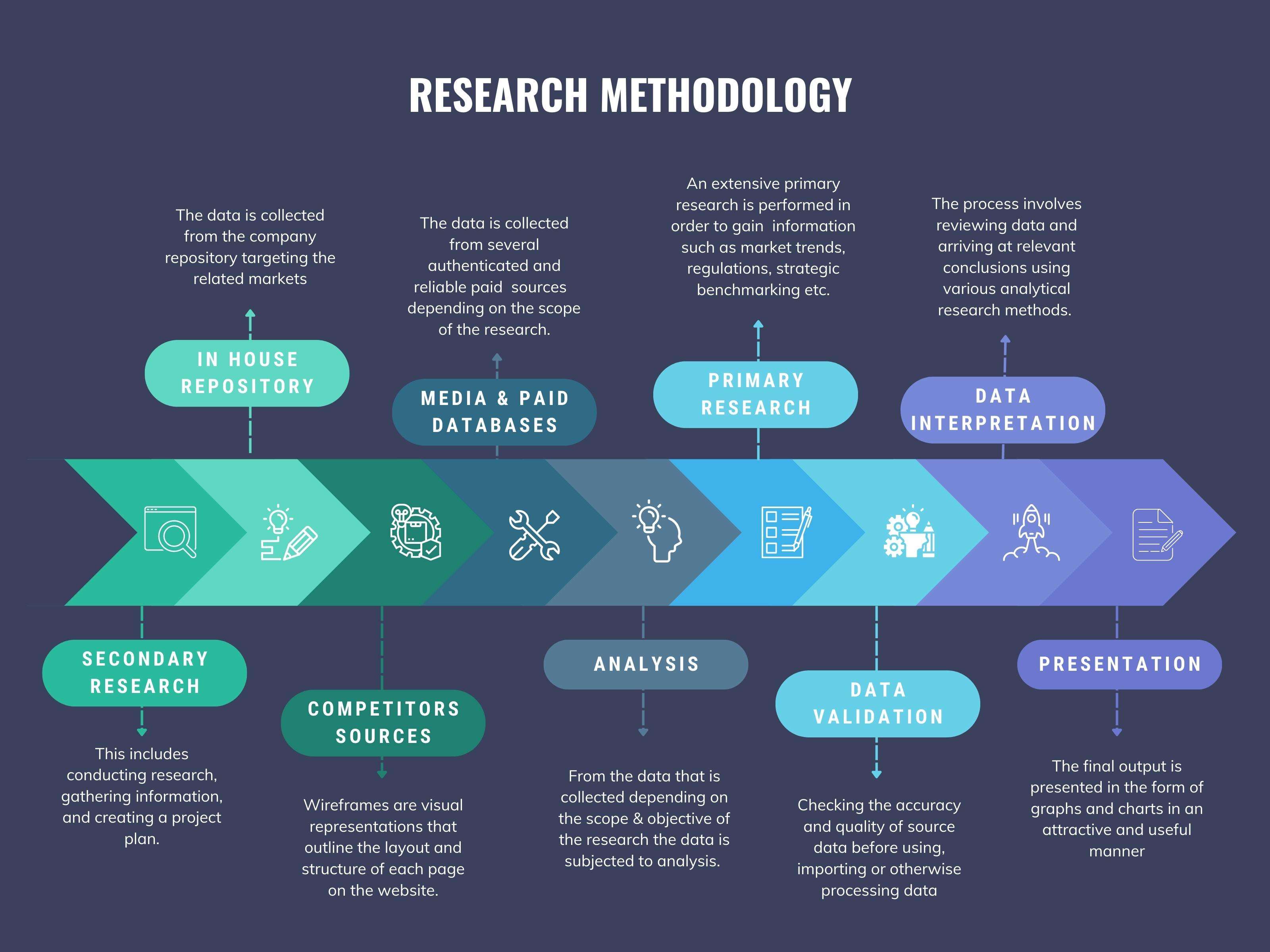
Food Robotics Market
Food Robotics - Global Market Outlook (2020-2028)

According to Stratistics MRC, the Global Food Robotics Market is accounted for $1.71 billion in 2020 and is expected to reach $5.31 billion by 2028 growing at a CAGR of 15.2% during the forecast period. Growing demand for collaborative robots, anticipated shortage of workforce due to high labour cost, and increasing food safety regulations are the major factors propelling the market growth. However, high installation costs of robotic systems and interoperability issues related to robotic technologies are hampering the market growth.
Food robotics refers to the machines used in the food & beverage industry to perform various complex activities such as picking, packing, and palletizing. Various technological advancements across numerous sectors have brought fictional robots to reality. Increase in demand for enhanced productivity augments the deployment of robots to automate the tasks, resulting in robots being an integral part of various industries.
Based on type, the scara segment is going to have a lucrative growth during the forecast period owing to the increase in demand for automation in the food & beverage industry. SCARA robots are simply an automation trend that companies around the world are readily investing in for boosting their product sales. The major attribution for this goes to the key market players of the SCARA robot.
By geography, Asia Pacific is going to have a lucrative growth during the forecast period due to the growing disposable income among the working population, combined with the increasing need for packaged and processed food. The automation in production and processing of RTE foods in the Asia Pacific region is projected to provide growth opportunities for the food robotics market. Rise in food & beverage sector and increase in demand for packaged food are major drivers of the market in Asia-Pacific. Furthermore, reduction in the operating costs and labour cost is anticipated to boost the demand for robotics in the food industry which will ultimately benefit the food robotics market growth.
Some of the key players profiled in the Food Robotics Market include ABB Group, Apex Automation & Robotics, Soft Robotics Market Trends, Asic Robotics AG, Aurotek Corporation, Bastian Solutions LLC, Denso Corporation, Ellison Technologies Inc, Fanuc Corporation, Fuji Robotics, Kawasaki Heavy Industries Ltd, KUKA AG, Mitsubishi Electric Corporation, Moley Robotics, Nachi-Fujikoshi Corporation, OMRON Corporation, Rockwell Automation Inc, Schunk GmbH, Staubli International AG, Universal Robots A/S, and Yasakawa Electric Corporation.
Payloads Covered:
• Low Type (<10 Kg)
• Medium Type (>10 Kg-<100Kg)
• Heavy Type (>100 kg)
Functions Covered:
• Cutting and Slicing
• Grading
• Logistics
• Packaging and Repacking
• Palletizing and Depalletizing
• Pick and Place
• Processing
• Quality Inspection
• Sorting & Defect Removal
Types Covered:
• Articulated
• Cartesian
• Collaborative
• Cylindrical
• Delta Robots
• Dual Arm Robots
• Parallel
• Portal Robots
• Selective Compliance Assembly Robot Arm (SCARA)
• Spherical Robots
Applications Covered:
• Bakery & Confectionery Products
• Brewery and Beverage
• Convenience Food & Infant Food
• Dairy Products
• Frozen and Chilled Foods
• Fruits & Vegetables
• Meat, Poultry, and Seafood
• Prepared Foods
• Processed Food
Regions Covered:
• North America
o US
o Canada
o Mexico
• Europe
o Germany
o UK
o Italy
o France
o Spain
o Rest of Europe
• Asia Pacific
o Japan
o China
o India
o Australia
o New Zealand
o South Korea
o Rest of Asia Pacific
• South America
o Argentina
o Brazil
o Chile
o Rest of South America
• Middle East & Africa
o Saudi Arabia
o UAE
o Qatar
o South Africa
o Rest of Middle East & Africa
What our report offers:
- Market share assessments for the regional and country-level segments
- Strategic recommendations for the new entrants
- Covers Market data for the years 2019, 2020, 2021, 2025, and 2028
- Market Trends (Drivers, Constraints, Opportunities, Threats, Challenges, Investment Opportunities, and recommendations)
- Strategic recommendations in key business segments based on the market estimations
- Competitive landscaping mapping the key common trends
- Company profiling with detailed strategies, financials, and recent developments
- Supply chain trends mapping the latest technological advancements
Free Customization Offerings:
All the customers of this report will be entitled to receive one of the following free customization options:
• Company Profiling
o Comprehensive profiling of additional market players (up to 3)
o SWOT Analysis of key players (up to 3)
• Regional Segmentation
o Market estimations, Forecasts and CAGR of any prominent country as per the client's interest (Note: Depends on feasibility check)
• Competitive Benchmarking
o Benchmarking of key players based on product portfolio, geographical presence, and strategic alliances
Table of Contents
1 Executive Summary
2 Preface
2.1 Abstract
2.2 Stake Holders
2.3 Research Scope
2.4 Research Methodology
2.4.1 Data Mining
2.4.2 Data Analysis
2.4.3 Data Validation
2.4.4 Research Approach
2.5 Research Sources
2.5.1 Primary Research Sources
2.5.2 Secondary Research Sources
2.5.3 Assumptions
3 Market Trend Analysis
3.1 Introduction
3.2 Drivers
3.3 Restraints
3.4 Opportunities
3.5 Threats
3.6 Application Analysis
3.7 Emerging Markets
3.8 Impact of Covid-19
4 Porters Five Force Analysis
4.1 Bargaining power of suppliers
4.2 Bargaining power of buyers
4.3 Threat of substitutes
4.4 Threat of new entrants
4.5 Competitive rivalry
5 Global Food Robotics Market, By Payload
5.1 Introduction
5.2 Low Type (<10 Kg)
5.3 Medium Type (>10 Kg-<100Kg)
5.4 Heavy Type (>100 kg)
6 Global Food Robotics Market, By Function
6.1 Introduction
6.2 Cutting and Slicing
6.3 Grading
6.4 Logistics
6.5 Packaging and Repacking
6.6 Palletizing and Depalletizing
6.7 Pick and Place
6.8 Processing
6.9 Quality Inspection
6.10 Sorting & Defect Removal
7 Global Food Robotics Market, By Type
7.1 Introduction
7.2 Articulated
7.3 Cartesian
7.4 Collaborative
7.5 Cylindrical
7.6 Delta Robots
7.7 Dual Arm Robots
7.8 Parallel
7.9 Portal Robots
7.10 Selective Compliance Assembly Robot Arm (SCARA)
7.11 Spherical Robots
8 Global Food Robotics Market, By Application
8.1 Introduction
8.2 Bakery & Confectionery Products
8.3 Brewery and Beverage
8.4 Convenience Food & Infant Food
8.5 Dairy Products
8.6 Frozen and Chilled Foods
8.7 Fruits & Vegetables
8.8 Meat, Poultry, and Seafood
8.9 Prepared Foods
8.10 Processed Food
9 Global Food Robotics Market, By Geography
9.1 Introduction
9.2 North America
9.2.1 US
9.2.2 Canada
9.2.3 Mexico
9.3 Europe
9.3.1 Germany
9.3.2 UK
9.3.3 Italy
9.3.4 France
9.3.5 Spain
9.3.6 Rest of Europe
9.4 Asia Pacific
9.4.1 Japan
9.4.2 China
9.4.3 India
9.4.4 Australia
9.4.5 New Zealand
9.4.6 South Korea
9.4.7 Rest of Asia Pacific
9.5 South America
9.5.1 Argentina
9.5.2 Brazil
9.5.3 Chile
9.5.4 Rest of South America
9.6 Middle East & Africa
9.6.1 Saudi Arabia
9.6.2 UAE
9.6.3 Qatar
9.6.4 South Africa
9.6.5 Rest of Middle East & Africa
10 Key Developments
10.1 Agreements, Partnerships, Collaborations and Joint Ventures
10.2 Acquisitions & Mergers
10.3 New Product Launch
10.4 Expansions
10.5 Other Key Strategies
11 Company Profiling
11.1 ABB Group
11.2 Apex Automation & Robotics
11.3 Asic Robotics AG
11.4 Aurotek Corporation
11.5 Bastian Solutions LLC
11.6 Denso Corporation
11.7 Ellison Technologies Inc
11.8 Fanuc Corporation
11.9 Fuji Robotics
11.10 Kawasaki Heavy Industries Ltd
11.11 KUKA AG
11.12 Mitsubishi Electric Corporation
11.13 Moley Robotics
11.14 Nachi-Fujikoshi Corporation
11.15 OMRON Corporation
11.16 Rockwell Automation Inc
11.17 Schunk GmbH
11.18 Staubli International AG
11.19 Universal Robots A/S
11.20 Yasakawa Electric Corporation
List of Tables
1 Global Food Robotics Market Outlook, By Region (2019-2028) ($MN)
2 Global Food Robotics Market Outlook, By Payload (2019-2028) ($MN)
3 Global Food Robotics Market Outlook, By Low Type (<10 Kg) (2019-2028) ($MN)
4 Global Food Robotics Market Outlook, By Medium Type (>10 Kg-<100Kg) (2019-2028) ($MN)
5 Global Food Robotics Market Outlook, By Heavy Type (>100 kg) (2019-2028) ($MN)
6 Global Food Robotics Market Outlook, By Function (2019-2028) ($MN)
7 Global Food Robotics Market Outlook, By Cutting and Slicing (2019-2028) ($MN)
8 Global Food Robotics Market Outlook, By Grading (2019-2028) ($MN)
9 Global Food Robotics Market Outlook, By Logistics (2019-2028) ($MN)
10 Global Food Robotics Market Outlook, By Packaging and Repacking (2019-2028) ($MN)
11 Global Food Robotics Market Outlook, By Palletizing and Depalletizing (2019-2028) ($MN)
12 Global Food Robotics Market Outlook, By Pick and Place (2019-2028) ($MN)
13 Global Food Robotics Market Outlook, By Processing (2019-2028) ($MN)
14 Global Food Robotics Market Outlook, By Quality Inspection (2019-2028) ($MN)
15 Global Food Robotics Market Outlook, By Sorting & Defect Removal (2019-2028) ($MN)
16 Global Food Robotics Market Outlook, By Type (2019-2028) ($MN)
17 Global Food Robotics Market Outlook, By Articulated (2019-2028) ($MN)
18 Global Food Robotics Market Outlook, By Cartesian (2019-2028) ($MN)
19 Global Food Robotics Market Outlook, By Collaborative (2019-2028) ($MN)
20 Global Food Robotics Market Outlook, By Cylindrical (2019-2028) ($MN)
21 Global Food Robotics Market Outlook, By Delta Robots (2019-2028) ($MN)
22 Global Food Robotics Market Outlook, By Dual Arm Robots (2019-2028) ($MN)
23 Global Food Robotics Market Outlook, By Parallel (2019-2028) ($MN)
24 Global Food Robotics Market Outlook, By Portal Robots (2019-2028) ($MN)
25 Global Food Robotics Market Outlook, By Selective Compliance Assembly Robot Arm (SCARA) (2019-2028) ($MN)
26 Global Food Robotics Market Outlook, By Spherical Robots (2019-2028) ($MN)
27 Global Food Robotics Market Outlook, By Application (2019-2028) ($MN)
28 Global Food Robotics Market Outlook, By Bakery & Confectionery Products (2019-2028) ($MN)
29 Global Food Robotics Market Outlook, By Brewery and Beverage (2019-2028) ($MN)
30 Global Food Robotics Market Outlook, By Convenience Food & Infant Food (2019-2028) ($MN)
31 Global Food Robotics Market Outlook, By Dairy Products (2019-2028) ($MN)
32 Global Food Robotics Market Outlook, By Frozen and Chilled Foods (2019-2028) ($MN)
33 Global Food Robotics Market Outlook, By Fruits & Vegetables (2019-2028) ($MN)
34 Global Food Robotics Market Outlook, By Meat, Poultry, and Seafood (2019-2028) ($MN)
35 Global Food Robotics Market Outlook, By Prepared Foods (2019-2028) ($MN)
36 Global Food Robotics Market Outlook, By Processed Food (2019-2028) ($MN)
Note: Tables for North America, Europe, APAC, South America, and Middle East & Africa Regions are also represented in the same manner as above.
List of Figures
RESEARCH METHODOLOGY

We at ‘Stratistics’ opt for an extensive research approach which involves data mining, data validation, and data analysis. The various research sources include in-house repository, secondary research, competitor’s sources, social media research, client internal data, and primary research.
Our team of analysts prefers the most reliable and authenticated data sources in order to perform the comprehensive literature search. With access to most of the authenticated data bases our team highly considers the best mix of information through various sources to obtain extensive and accurate analysis.
Each report takes an average time of a month and a team of 4 industry analysts. The time may vary depending on the scope and data availability of the desired market report. The various parameters used in the market assessment are standardized in order to enhance the data accuracy.
Data Mining
The data is collected from several authenticated, reliable, paid and unpaid sources and is filtered depending on the scope & objective of the research. Our reports repository acts as an added advantage in this procedure. Data gathering from the raw material suppliers, distributors and the manufacturers is performed on a regular basis, this helps in the comprehensive understanding of the products value chain. Apart from the above mentioned sources the data is also collected from the industry consultants to ensure the objective of the study is in the right direction.
Market trends such as technological advancements, regulatory affairs, market dynamics (Drivers, Restraints, Opportunities and Challenges) are obtained from scientific journals, market related national & international associations and organizations.
Data Analysis
From the data that is collected depending on the scope & objective of the research the data is subjected for the analysis. The critical steps that we follow for the data analysis include:
- Product Lifecycle Analysis
- Competitor analysis
- Risk analysis
- Porters Analysis
- PESTEL Analysis
- SWOT Analysis
The data engineering is performed by the core industry experts considering both the Marketing Mix Modeling and the Demand Forecasting. The marketing mix modeling makes use of multiple-regression techniques to predict the optimal mix of marketing variables. Regression factor is based on a number of variables and how they relate to an outcome such as sales or profits.
Data Validation
The data validation is performed by the exhaustive primary research from the expert interviews. This includes telephonic interviews, focus groups, face to face interviews, and questionnaires to validate our research from all aspects. The industry experts we approach come from the leading firms, involved in the supply chain ranging from the suppliers, distributors to the manufacturers and consumers so as to ensure an unbiased analysis.
We are in touch with more than 15,000 industry experts with the right mix of consultants, CEO's, presidents, vice presidents, managers, experts from both supply side and demand side, executives and so on.
The data validation involves the primary research from the industry experts belonging to:
- Leading Companies
- Suppliers & Distributors
- Manufacturers
- Consumers
- Industry/Strategic Consultants
Apart from the data validation the primary research also helps in performing the fill gap research, i.e. providing solutions for the unmet needs of the research which helps in enhancing the reports quality.
For more details about research methodology, kindly write to us at info@strategymrc.com
Frequently Asked Questions
In case of any queries regarding this report, you can contact the customer service by filing the “Inquiry Before Buy” form available on the right hand side. You may also contact us through email: info@strategymrc.com or phone: +1-301-202-5929
Yes, the samples are available for all the published reports. You can request them by filling the “Request Sample” option available in this page.
Yes, you can request a sample with your specific requirements. All the customized samples will be provided as per the requirement with the real data masked.
All our reports are available in Digital PDF format. In case if you require them in any other formats, such as PPT, Excel etc you can submit a request through “Inquiry Before Buy” form available on the right hand side. You may also contact us through email: info@strategymrc.com or phone: +1-301-202-5929
We offer a free 15% customization with every purchase. This requirement can be fulfilled for both pre and post sale. You may send your customization requirements through email at info@strategymrc.com or call us on +1-301-202-5929.
We have 3 different licensing options available in electronic format.
- Single User Licence: Allows one person, typically the buyer, to have access to the ordered product. The ordered product cannot be distributed to anyone else.
- 2-5 User Licence: Allows the ordered product to be shared among a maximum of 5 people within your organisation.
- Corporate License: Allows the product to be shared among all employees of your organisation regardless of their geographical location.
All our reports are typically be emailed to you as an attachment.
To order any available report you need to register on our website. The payment can be made either through CCAvenue or PayPal payments gateways which accept all international cards.
We extend our support to 6 months post sale. A post sale customization is also provided to cover your unmet needs in the report.
Request Customization
We provide a free 15% customization on every purchase. This requirement can be fulfilled for both pre and post sale. You may send your customization requirements through email at info@strategymrc.com or call us on +1-301-202-5929.
Note: This customization is absolutely free until it falls under the 15% bracket. If your requirement exceeds this a feasibility check will be performed. Post that, a quote will be provided along with the timelines.
WHY CHOOSE US ?

Assured Quality
Best in class reports with high standard of research integrity

24X7 Research Support
Continuous support to ensure the best customer experience.

Free Customization
Adding more values to your product of interest.

Safe & Secure Access
Providing a secured environment for all online transactions.

Trusted by 600+ Brands
Serving the most reputed brands across the world.
